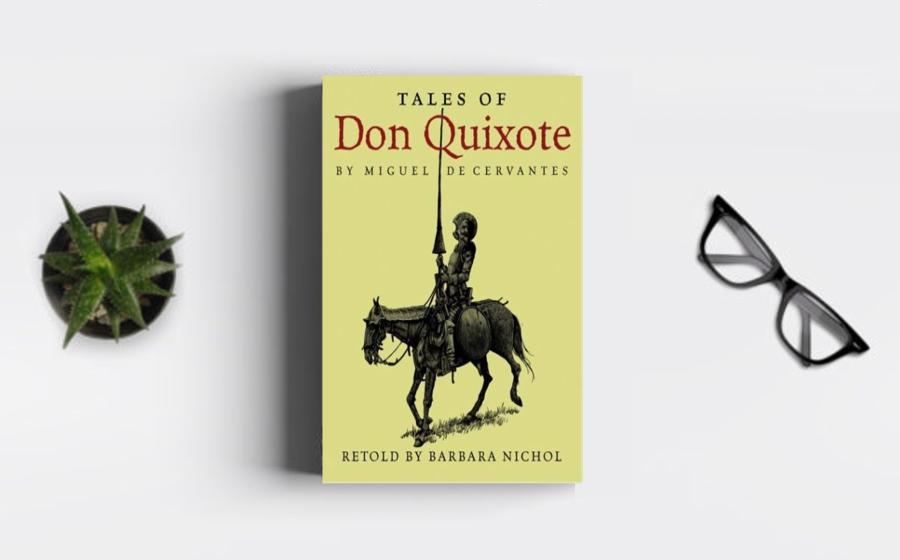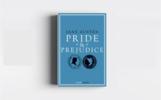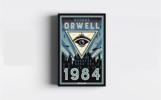"Don Quixote," penned by Miguel de Cervantes and
first published in two parts in 1605 and 1615, stands as
a classic masterpiece of world literature. This
monumental work is often considered the first modern
European novel, and its influence on literature, art,
and popular culture is immeasurable. The novel follows
the misadventures of the ingenious hidalgo Alonso
Quixano, who, driven mad by reading too many chivalric
romances, dons the identity of Don Quixote and embarks
on a quest to revive chivalry and right the wrongs of
the world. Cervantes' satirical exploration of the gap
between imagination and reality, coupled with his
profound insights into the human condition, elevates
"Don Quixote" to the status of a timeless classic.
One of the reasons "Don Quixote" is celebrated as a
classic masterpiece is its innovative narrative
structure. Cervantes employs a metafictional approach,
presenting the story as the manuscript of a history
written by an Arab author named Cide Hamete Benengeli,
which he claims to have translated. This multi-layered
narrative device introduces a self-awareness to the
novel, inviting readers to reflect on the act of
storytelling and the nature of fiction. By blending
reality with fiction, Cervantes challenges conventional
narrative forms of his time, laying the foundation for
the modern novel. This narrative complexity contributes
to the enduring appeal of "Don Quixote" as a work that
transcends its historical context and continues to
captivate readers with its innovative storytelling.
The character of Don Quixote himself is a central
pillar of the novel's classic status. Alonso Quixano's
transformation into the deluded knight-errant, Don
Quixote, is a masterstroke of characterization that
explores the power of imagination and the thin line
between sanity and madness. Don Quixote's idealistic
vision of the world, shaped by his extensive reading of
chivalric romances, propels him into a quest to become a
knight and champion the cause of the helpless. His
character becomes a symbol of the transformative and
sometimes delusional power of literature. Don Quixote's
enduring legacy lies in his complexity, he is
simultaneously a figure of satire, a tragic hero, and a
symbol of the enduring human spirit that seeks meaning
and purpose in a world that often defies our
expectations.
Cervantes' satirical exploration of
the chivalric romance genre and the larger literary
landscape of his time adds to the classic nature of "Don
Quixote." The novel is a parody of the popular chivalric
romances that captivated readers in the 16th century,
and Cervantes uses Don Quixote's misguided adventures to
mock the conventions and cliches of these tales. Through
this satirical lens, Cervantes critiques not only the
literary trends of his time but also the nature of
storytelling itself. The novel becomes a self-aware
commentary on the power of literature to shape our
perceptions of reality and influence our understanding
of the world.
The relationship between Don
Quixote and his loyal squire, Sancho Panza, is a
poignant element that contributes to the classic nature
of the novel. Sancho, a pragmatic and down-to-earth
character, serves as a foil to Don Quixote's idealism.
The dynamic between the two characters creates a rich
tapestry of humor, wisdom, and tragedy. Sancho's
unwavering loyalty to his master, despite the absurdity
of Don Quixote's quests, adds a layer of humanity to the
narrative. Their interactions offer moments of genuine
camaraderie, providing readers with both comedic relief
and moments of profound reflection on the nature of
friendship and loyalty.
Cervantes' exploration of
the theme of reality versus illusion is a fundamental
aspect of "Don Quixote" that contributes to its classic
status. The novel blurs the boundaries between the
fantastical world Don Quixote imagines and the harsh
realities of the world he actually inhabits. Cervantes
invites readers to question the nature of truth and
perception, challenging the dichotomy between reality
and imagination. This thematic exploration anticipates
later literary movements that delve into the subjective
nature of reality, ensuring that "Don Quixote" remains a
work that resonates with readers who appreciate the
complexities of the human mind.
The episodic
structure of "Don Quixote" is another feature that adds
to its classic nature. The novel is composed of a series
of loosely connected adventures, each presenting a new
set of characters and challenges for Don Quixote. This
episodic format allows Cervantes to showcase his
versatility as a storyteller, offering a diverse range
of tales within the overarching narrative. The episodic
structure, coupled with the novel's metafictional
elements, creates a dynamic reading experience that
engages readers with a variety of tones, genres, and
perspectives.
Cervantes' use of humor, wit, and
satire contributes significantly to the classic nature
of "Don Quixote." The novel is infused with a comedic
spirit that ranges from slapstick humor to more subtle,
intellectual wit. Cervantes uses humor not only as a
tool for satire but also as a means of engaging readers
and highlighting the absurdities of the human condition.
The laughter elicited by the novel serves as a vehicle
for deeper reflection on the nature of reality,
illusion, and the human propensity for self-deception.
The novel's exploration of identity and the concept
of self-fashioning adds a layer of intellectual depth to
its classic status. Don Quixote's decision to create a
new identity for himself as a knight-errant reflects a
broader theme of self-invention and the malleability of
personal identity. Cervantes challenges the fixed
notions of identity prevalent in his time, suggesting
that individuals have the agency to shape their own
narratives and redefine themselves. This thematic
exploration anticipates later philosophical discussions
on the fluidity of identity, contributing to the
enduring relevance of "Don Quixote."
The novel's
influence on literature and the arts is a testament to
its classic status. "Don Quixote" has inspired countless
writers, artists, and filmmakers across the centuries.
Its impact extends beyond the realm of literature,
influencing diverse cultural forms such as painting,
music, and theater. The novel's iconic characters and
themes have become archetypes embedded in the collective
consciousness, ensuring that "Don Quixote" remains a
touchstone for creative expression and a source of
inspiration for generations of artists.
Cervantes' inclusion of interpolated stories within the
main narrative enriches the novel's classic nature.
These side narratives, such as the story of Cardenio and
Dorotea or the tale of the captive's escape, serve as
literary diversions that add depth to the overall
narrative. These stories-within-a-story contribute to
the novel's richness, offering readers additional layers
of meaning and showcasing Cervantes' storytelling
prowess. The inclusion of these tales enhances the
classic status of "Don Quixote" as a work that
masterfully weaves together multiple narrative threads.
The universal themes of idealism, madness, and the
pursuit of an authentic life contribute to the enduring
significance of "Don Quixote." The novel's exploration
of Don Quixote's quest for meaning and his refusal to
accept the limitations of reality resonates with readers
across different cultures and historical periods. The
novel becomes a mirror reflecting the perennial human
desire to transcend the mundane and embrace a more
profound understanding of existence. Cervantes' ability
to tap into these universal themes ensures that "Don
Quixote" remains a classic that transcends cultural and
temporal boundaries.
"Don Quixote" by Miguel de Cervantes stands as a classic masterpiece due to its innovative narrative structure, memorable characters, satirical brilliance, and profound exploration of the human condition. Cervantes' creation of Don Quixote, the deluded knight-errant, continues to captivate readers with its complex portrayal of the interplay between imagination and reality.






